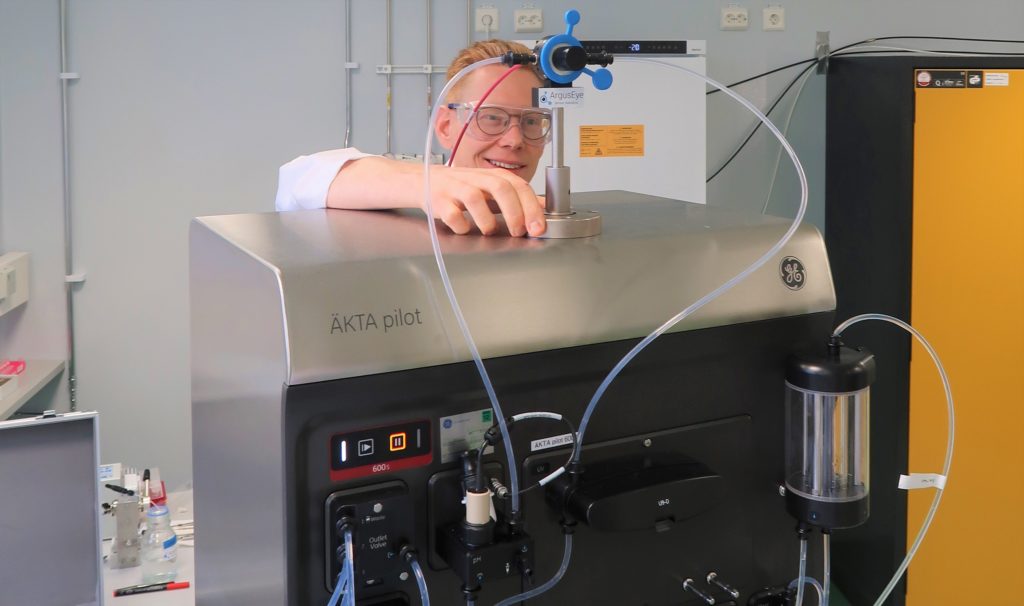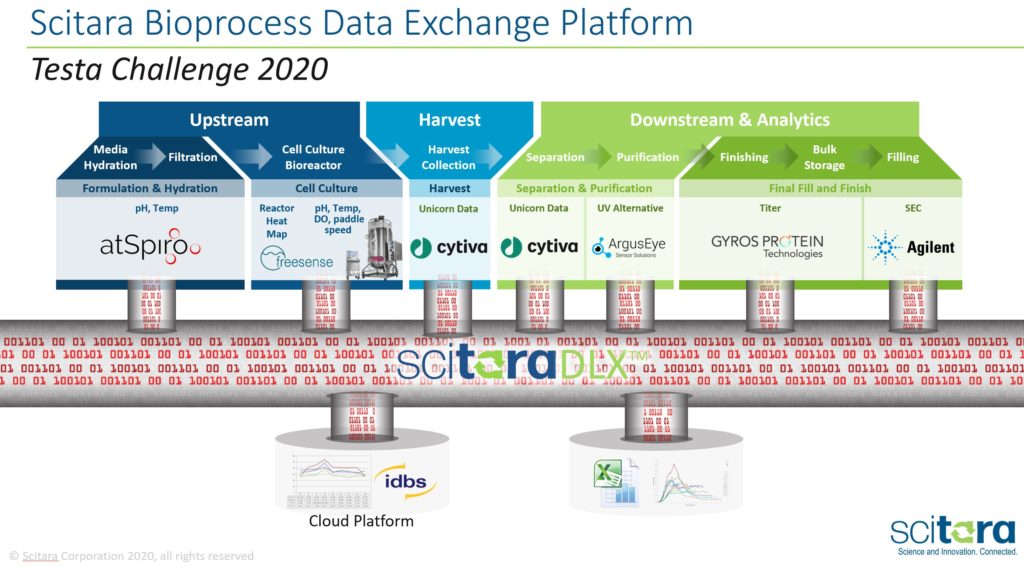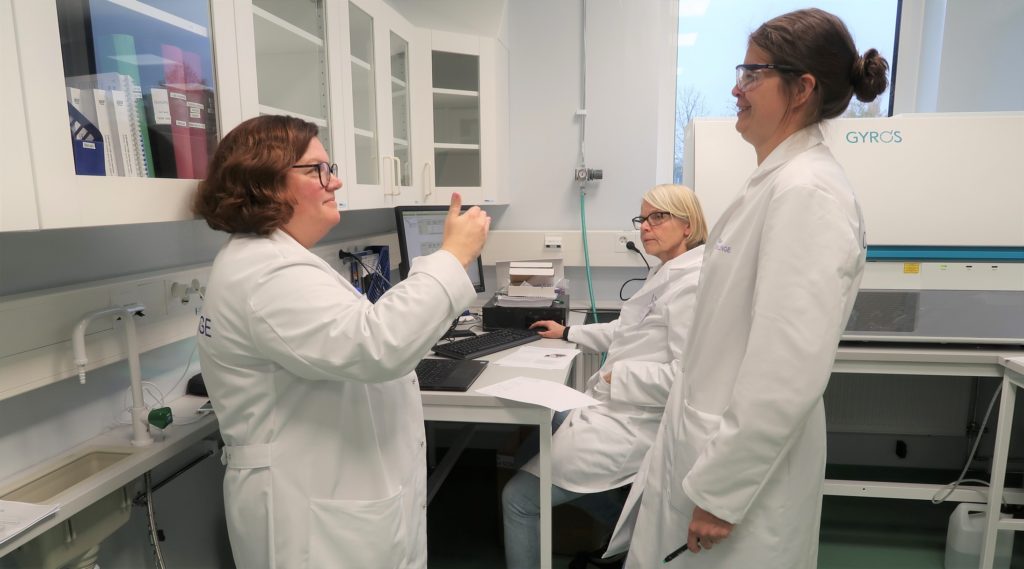They call Wednesday a hump day for a reason. After day one and day two pushing the teams to their limits, the learning curve was certainly step. But at the Testa Center we keep on pushing, and things started to look more downhill.
Due to the unforeseen circumstances from day two, day three was committed to restarting the bioreactor and catching up the with the intended schedule. In the meantime, we started to evaluate and analyze atSpiro’s ShakeReactor run and assess the level of produced product and as well perform metabolite analytics from samples collected at hourly intervals. For this step we used Gyrolab’s xP workstation, Roche CEDEX Bio Analyzer and Cytiva’s ÄKTA Go systems. In parallel, also at hourly intervals, samples were taken from the 50-liter Xcellerex Disposable Reactor (XDR50) and preserved in order to be shipped to the UK, to be received by our second remote participant, IS-Instruments. IS-Instruments will be analyzing using state of the art deep-UV Raman technology and later compared with all the data retrieved in the Testa Center lab.
pH 9? No problem for the ArgusEye sensor!
During the analysis one of the four SkakeReactor results indicated an unexpectedly high pH, a pH of nine in fact. Charlotte Brink, Downstream Specialist from Testa Center, became very suspicious about it. Erik Martinsson, who’s been at Linköping university before starting ArgusEye said, with his always so calm voice:
“Just keep on going, we will make it happen!”.
Erik Martinsson, ArgusEye.
This is a type of mentality we welcome at the Testa Center as sometimes we need to roll up our sleeves and keep working on it until it’s right!

Not knowing what we might expect, we began further analysis using the ÄKTA pure 25. But this time it was modified to integrate ArgusEye’s in-line nanoplasmonic sensor into the flow path enabling an additional high-tech detection method. Erik’s years of experience paid off – the result was better than expected according to the UNICORN software analysis as well as data from ArgusEye’s system.

Sampling, analyzing and collecting the data
Later in the afternoon it was time to connect the ÄKTA pilot 600 and the ÄKTA Pure 25 to purify the samples by affinity chromatography utilizing the Capto L resin. Throughout this step of the biomanufacturing process Scitara’s DLX data platform was connected using the UNICORN OPC interfaces. Having the DLX data platform enabled with ÄKTA instrument UNICORN control-system data, as well as most other instruments used, enabled us to create nice code snippets, publishing results directly into live data sheets, trigger custom web-application code, much more.

An positive attitude throughout the process
Certainly, one memorable feature that kept everyone going was the positive attitude throughout the process. After the incident of the bioreactor bag from day two, we kept the momentum going not only by cleaning and preparing the bioreactor for another run, but also stepping it up even further when Jozsef Vasi happily volunteered to come in exceptionally early on day three to start the next batch. His determination and the use of the single-use bioreactor (XDR50) made all the difference in the world right there. Jozsef was a hero to everyone that day in the Testa Center as this meant we could continue our Testa Challenge journey further into day four!
Do you also have people like that in your team? We think that you do! The circumstances in the Testa Center tends to show you that these people are all around you, given that you give them a chance. At the Testa Center we have a range of talented personnel ready to help you and your team to excel in your next project. Come and meet the team to learn more!



Pingback: Day 4: Strategies for how to be successful in biopharma - Testa Center